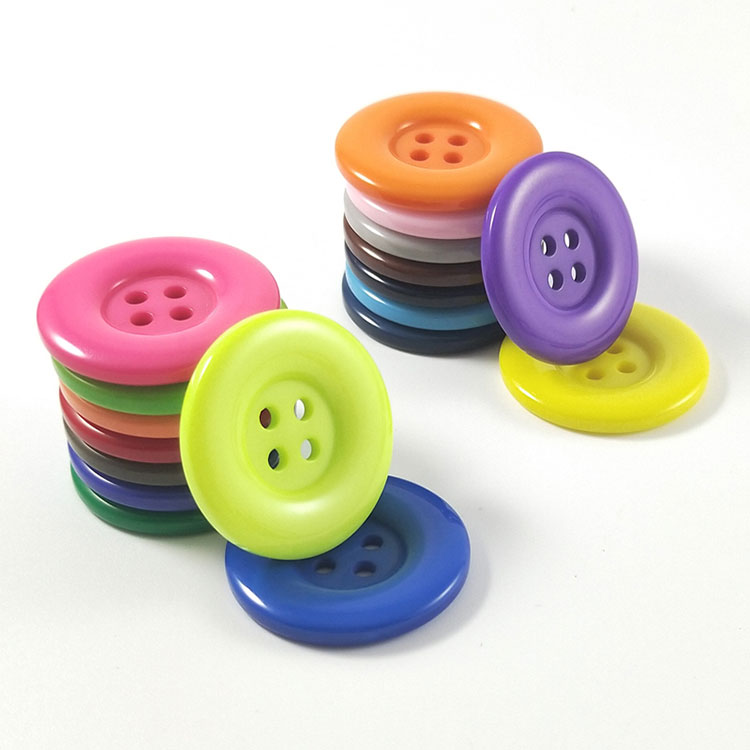The features of Resin Buttons And Raw Materials
2025-05-20
Resin buttons and their raw materials have a variety of features that make them popular in the garment and fashion industries. Here's a breakdown of their characteristics:
Features of Resin Buttons:
Durability:
Highly resistant to wear and tear.
Withstand washing, dry cleaning, and general use without deforming or cracking.
Variety in Appearance:
Can be molded into various shapes, sizes, and designs.
Available in a wide range of colors and finishes (matte, glossy, transparent, etc.).
Lightweight:
Despite their solid appearance, resin buttons are lightweight, making them ideal for clothing.
Cost-Effective:
Cheaper than natural materials (like wood, horn, or metal) while offering similar aesthetics.
Customizability:
Easily embedded with designs, glitter, or logos.
Can imitate the appearance of other materials like wood, pearl, or bone.
Moisture and Chemical Resistance:
Resistant to water, oils, and many chemicals, adding to their longevity.
Heat Resistance (to a degree):
Can tolerate ironing and mild heat exposure without damage (depending on the type of resin).

Raw Materials Used in Resin Buttons:
Polyester Resin:
Most common raw material for buttons.
Offers strength, moldability, and clarity.
Hardener/Catalyst (e.g., MEKP - Methyl Ethyl Ketone Peroxide):
Used to cure the resin and harden it into a solid button.
Pigments and Dyes:
Added to the resin mixture to achieve different colors and effects.
Fillers:
Materials like calcium carbonate may be added to modify the texture or reduce cost.
Additives:
UV stabilizers, fire retardants, or gloss enhancers depending on the application.
Molds:
While not a raw material per se, molds made from silicone or metal are used to form the button shapes.
If you are interested in our products or have any questions, please feel free to contact us and we will reply you within 24 hours.